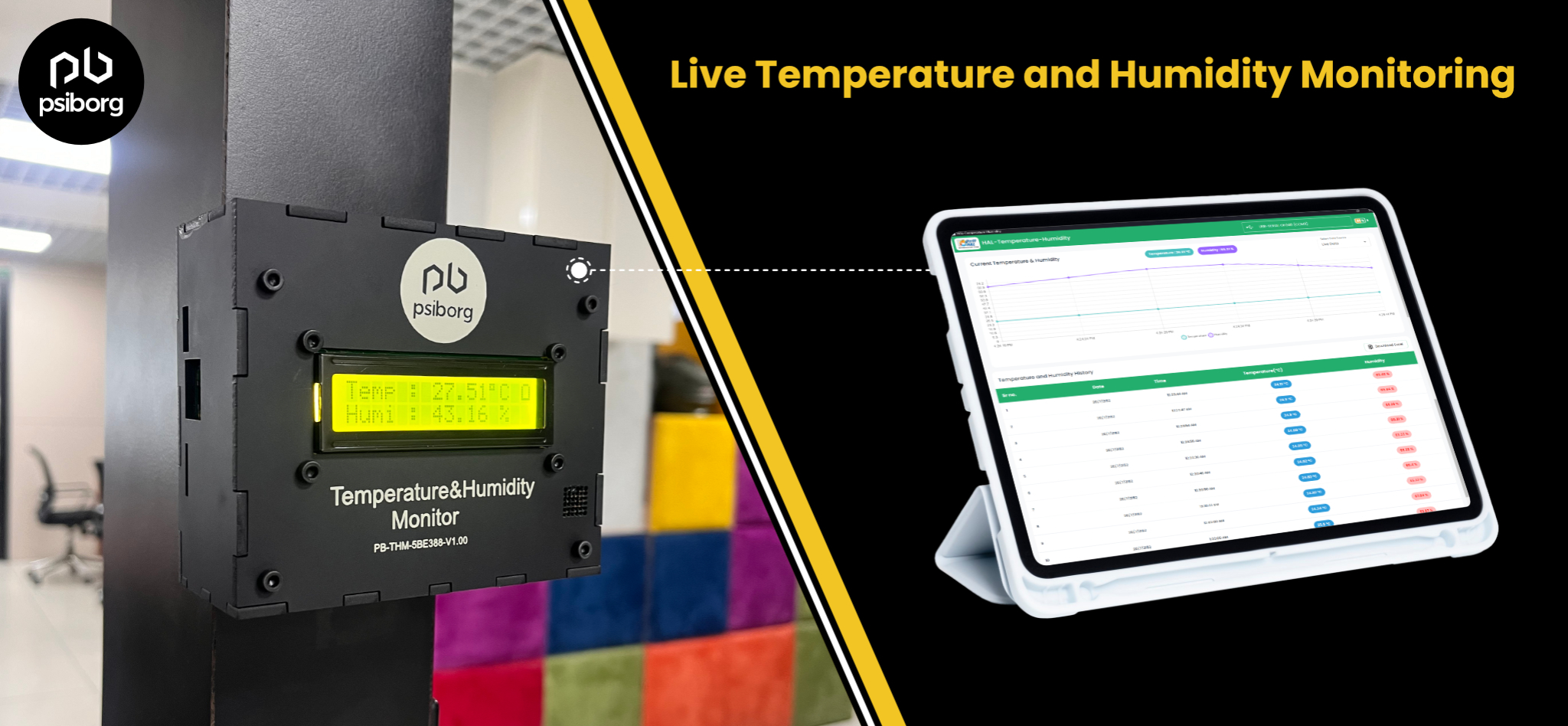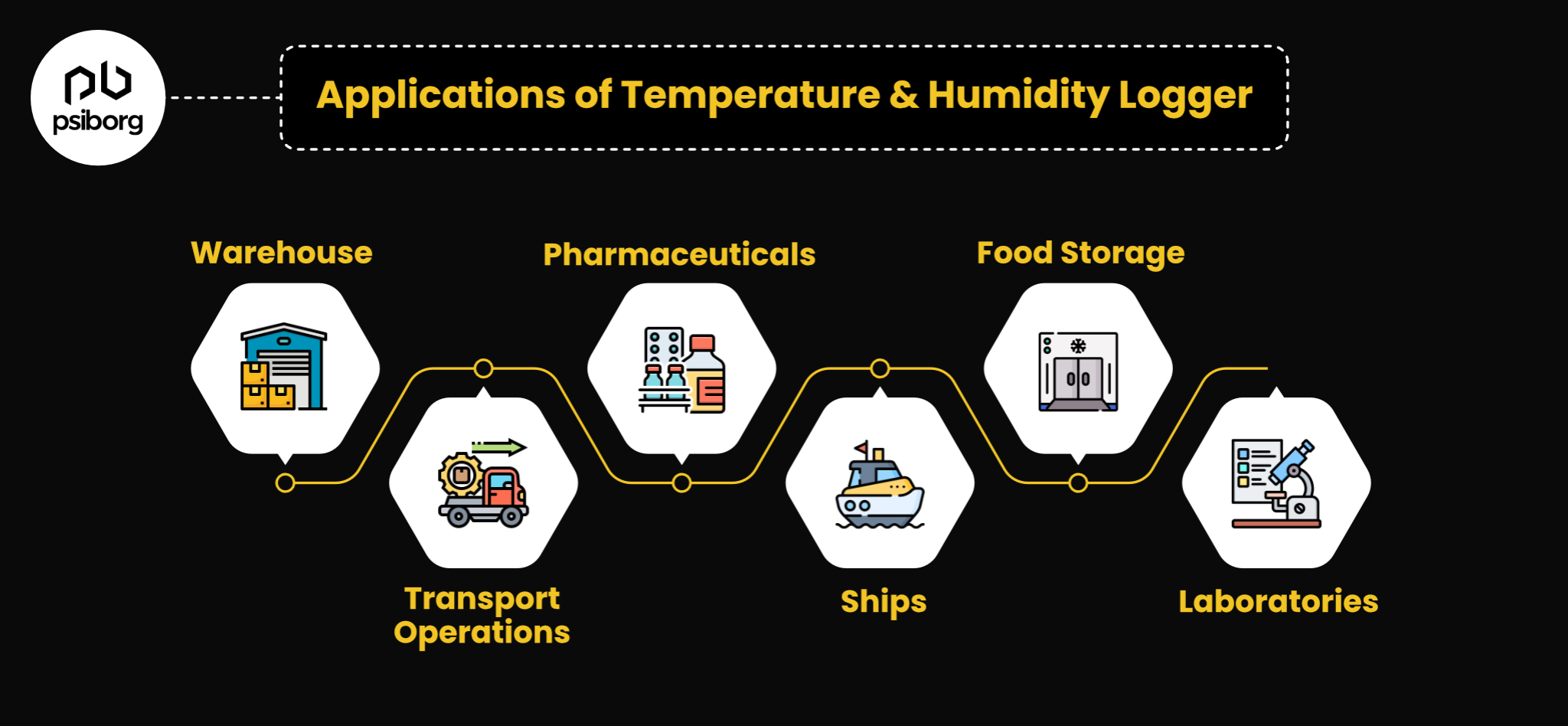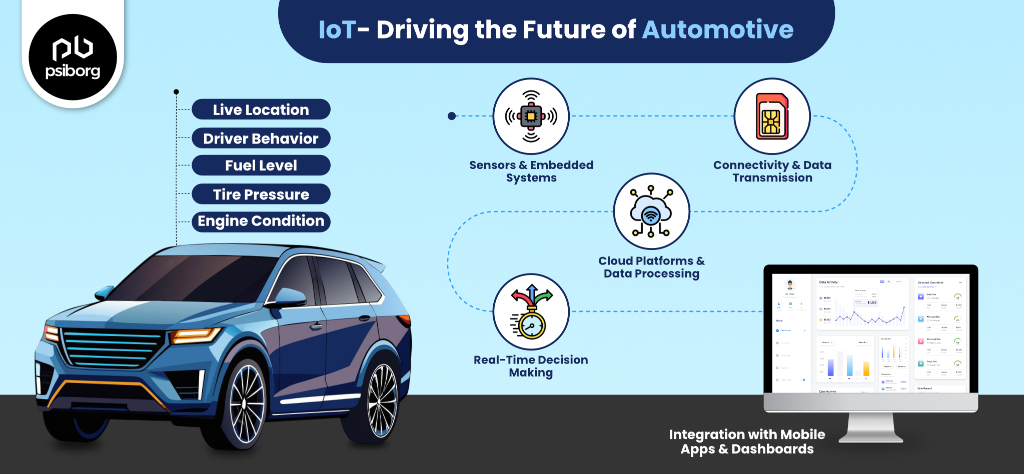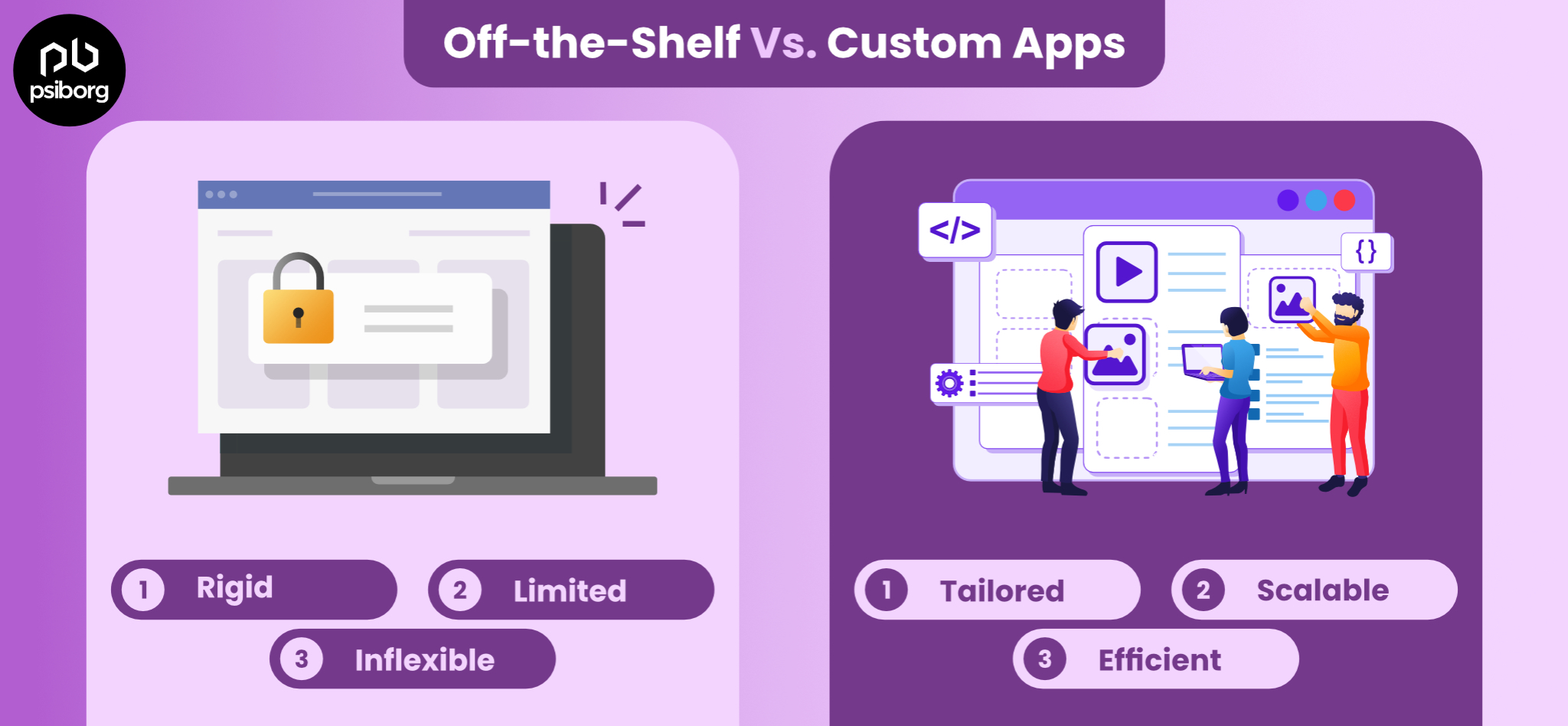Let’s say you have a large warehouse where you store various expensive medicines, carry fresh produce across regions or have other items of high importance and care. Now will all these temperature-sensitive items in the warehouse, if at all there is a rise in humidity or a sudden drop in temperature, it can be so damaging. When both the stock and money are at stake, you really need a temperature and humidity monitoring system.
From managing a cold chain to a workspace, real-time monitoring of temperature and humidity is very important. Whether product or people, both need the right environment. The incredible technology has brought us smart solutions that are also wireless, remotely accessible and so accurate. Now we’ll go on to learn about the different types, benefits and applications of temperature and humidity monitoring.

Types of Temperature Humidity Monitors
1. LAN / Ethernet-Based Temperature Humidity Monitor
This type of monitor is the most common in defense and military applications because it can’t compromise data security and network stability even a bit. A LAN-based temperature and humidity monitor is directly connected to a wired network for smooth and continuous data transmission. Being highly reliable and can’t be bothered by wireless interference makes it the top choice for government labs and defense storage. The ethernet temperature and humidity sensor in the setup offers accurate readings and integrates really well with centralized systems. The sensor data analysis dashboard is hosted on the Local server.
2. WiFi Temperature and Humidity Sensor
You can’t go wrong with a wifi temperature and humidity sensor if flexibility and ease of installation are on your mind. This variant works over a wireless network that lets you check temperature and humidity from anywhere at any time, just with a few taps on your phone or laptop. For places like retail stores, warehouses, server rooms, etc, these wireless temperature and humidity sensors make so much sense. No extra cabling at all, it will also help with remote temperature and humidity monitoring.
3. USB-Based Temperature Humidity Logger
Working from remote areas? Need to log data without internet access? With a USB-based temperature and humidity logger, you can! Just plug the logger into your laptop/computer to download the data in it. Basically, it will continue to record temperature and humidity over time so that you can analyze it later when you can. If you work in inspection activities, for example, it can be perfect for quality checks or even field data collection. The device is connected with the PC and the collected sensor data can be visualised from a Desktop App.
4. Temperature and Humidity Sensor with Display
Sometimes, you don’t want to access an app or software to have a look at the numbers and this is where the temperature and humidity sensor with display becomes the hero. These sensors that look just like digital clocks show live data directly on their screens. You can have them at your workplace, classrooms, labs or wherever you need to monitor environmental temperature and humidity , this version works best.
5. LoRa Temperature and Humidity Sensor
LoRa-based sensor monitoring offers a reliable, long-range, and low-power solution for monitoring environmental conditions in large or remote industrial spaces. The most common applications where LoRa wireless sensors are used are Airports, server rooms , Poultry Farms, pharmaceutical storage, cold chain logistics, and heavy industries.
Benefits of Live Temperature and Humidity Monitoring
You are wrong if you believe that a temperature and humidity monitoring system is just another formality because it actually brings some great advantages:
1. Real-Time Monitoring and Notifications
If the conditions of the place go beyond the safe limits, you get instant alerts so that it can be solved as soon as possible. This is especially helpful in industries like pharma and food storage, where even a little change in temperature conditions can lead to huge losses.
2. Remote Access
It can be very difficult to be physically present all the time to check your data. But with remote temperature and humidity sensors, you can monitor your environment from anywhere. Everything is on the dashboards that can be accessed via smartphones.
3. Data Logging for Compliance
It’s required for certain industries to maintain all past records. The good news is that a temperature and humidity logger records and stores data that can be used for audits and even regulatory compliance.
4. Cost and Resource Efficiency
A business can literally save a lot of money by preventing spoilage, equipment malfunction or downtime. A temperature and humidity controller in place will automatically maintain optimal conditions and this will eventually reduce manual intervention.
5. Easy Integration
Regardless of whether you opt for a LAN-based, wifi or USB temperature and humidity logger, these systems are designed to be easily integrated with existing IT setups and management systems so as to support their functioning instead of interfering with them.
Applications of Temperature Humidity Logger
Today in this world of IT and cloud infrastructure, every big industry requires server rooms. Keeping a check on temperature and humidity monitoring in server rooms is very important . Apart from server rooms , there are various areas where this technology makes a huge difference:

1. Warehouse Temperature and Humidity Monitoring System
Large warehouses often store special items that need to be handled with utmost care. You can’t even be slightly negligent. If your business includes storing and handling such products, a warehouse temperature and humidity monitoring system is just what you need to maintain consistent conditions throughout the storage unit.
2. Temperature and Humidity Monitoring for Transport Operations
When it comes to logistics, it’s really necessary to maintain the correct temperature. Since the travel is usually long, you need to be extra cautious, particularly when carrying perishable items or sensitive chemicals. Through remote temperature and humidity monitoring, operators can track the live locations of their vehicles and make sure they meet product quality and regulatory compliance
3. Temperature and Humidity Monitoring for Pharmaceuticals
You can’t take chances with medicines; they must be stored under strict temperature and humidity ranges. To make sure that the stock remains in the right state throughout its shelf life, you need to deploy a reliable industrial temperature and humidity sensor with logging capabilities. It instantly sends alerts regarding the environmental shifts that can be adjusted in time to prevent the loss of high-value drugs.
4. Temperature and Humidity Monitoring for Ships
Cargo ships that transport food, fuel or chemicals to different locations need serious environmental monitoring. A temperature and humidity meter in ships works great even in the middle of the vast ocean and ensures that everything is carried safely and is under control.
5. Temperature and Humidity Monitoring for Food Storage
Food is a very delicate category of items. This is the reason why all facilities, from restaurants to cold storage units, must keep it at specific conditions where it doesn’t rot. With a temperature humidity monitor that sends real-time alerts, it’s possible to avoid quality and loss of inventory.
6. Temperature and Humidity Monitoring for Laboratories
In places like Research & Development units, testing spaces or pathology labs, maintaining a controlled setting is a must. An industrial humidity sensor or a temperature humidity logger keeps the temperature optimal and also makes sure that all experiments remain valid and that no instrument gets damaged due to improper environmental conditions.
Why PsiBorg’s Monitoring Solutions?
The team of experts at PsiBorg specializes in offering smart and customized temperature and humidity monitoring systems that suit your business just right. It could be a wifi temperature and humidity sensor, an ethernet temperature and humidity sensor or even a temperature humidity controller. Our IoT-powered solutions are very reliable and user-friendly. Once we integrate remote temperature and humidity sensors into your existing infrastructure, you will enjoy data analytics at your fingertips
Conclusion
Temperature and humidity are those critical data points that have the power to interfere with your operations and damage your products. If you aim to ensure optimal conditions at all times, you must use live monitoring technology that comes with a combination of successful hardware like a temperature humidity meter, industrial humidity sensor etc. It’s a smart step towards managing a warehouse, cargo, cold chain, test lab etc so that it keeps working efficiently and safely. Trust PsiBorg for all the IoT solution development needs to stay ahead and we will not let you down.
FAQs
A temperature and humidity monitoring system is a very supportive device that works in real time to successfully keep track of the climatic temperature and moisture levels on the premises. It helps businesses maintain the right environmental temperature in their warehouses, labs, and storage rooms and view the data live on a screen or even remotely through an app.
Most commonly used temperature humidity sensors are sensirion SHT10, SHT20,SHT30, SHT40 and honeywell HIH8000 series. To keep a tab on the climatic conditions inside a storage facility, a temperature and humidity sensor comes in really handy.
A temperature humidity meter is a fantastic technology that tells you about the present environmental conditions of a place at any time you need to know. It can be used anywhere, whether in homes, workspaces, cold storage and even vehicles. It works wonderfully to prevent damage to sensitive items and makes sure their quality is intact.
PsiBorg raises the bar by offering all 4 different types of temperature and humidity monitors. You can get the LAN, WiFi, USB or display-based. Plus, our user-friendly web app makes remote monitoring super simple even for someone with not much technical knowledge.




